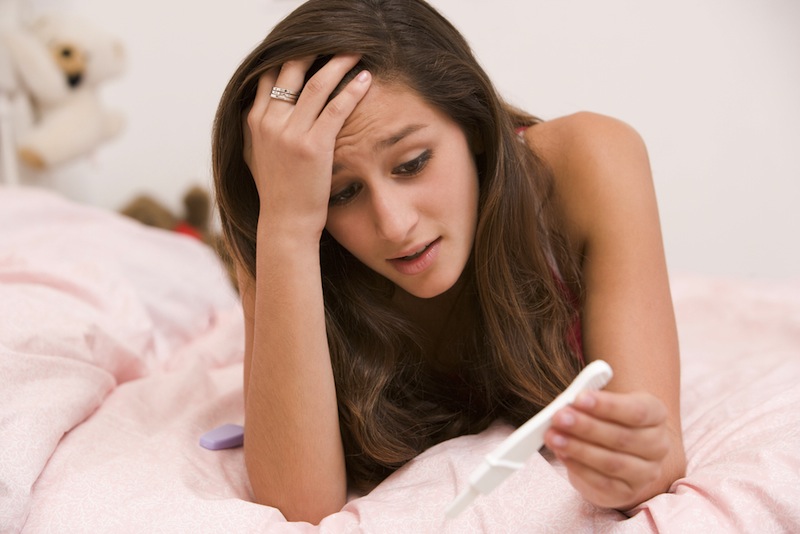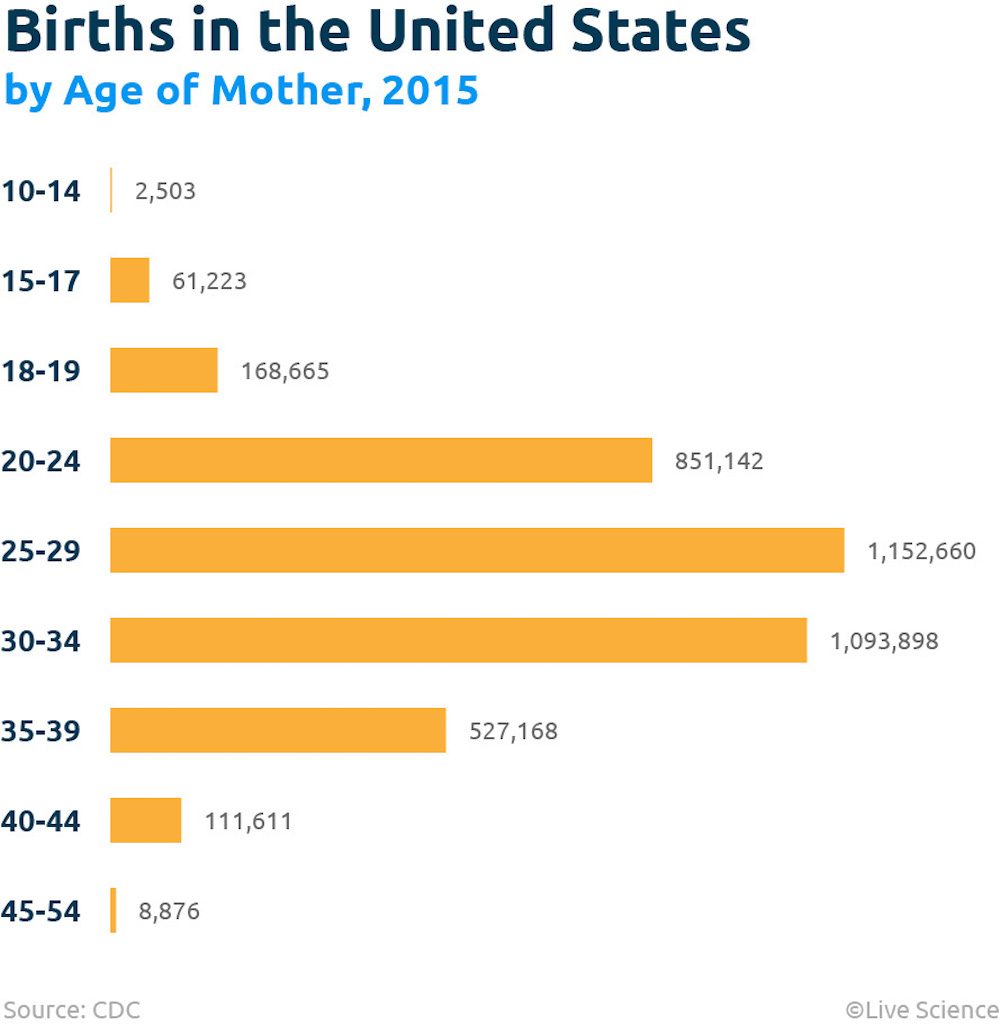Teen Birthrates Reach Another Record Low, CDC Says

Teen birthrates in the U.S. hit an all-time low again in 2015, a new report on preliminary data finds. The teen birth rate has declined almost continuously over the past two decades, according to the federal statistics.
In 2015, the teen birthrate decreased to 22.3 per 1,000 teens ages 15 to 19, down from 24.2 births per 1,000 teens in this age group in 2014, according to the new report from the Centers for Disease Control and Prevention (CDC).
The 2015 birthrate was a 64 percent decrease from the rate's peak in 1991, at 62 births per 1,000 teens, according to the report, published today (June 2) by researchers at the CDC's Center for National Health Statistics. [7 Ways Pregnant Women Affect Babies]
In the report, the researchers broke down the rate further, by smaller age groups: Among 15- to 17-year-olds, the birthrate decreased from 11 births per 1,000 teens in 2014 to 10 births per 1,000 in 2015. And among 18- and 19-year-olds, the birthrate decreased from 44 births per 1,000 teens in 2014 to 41 births per 1,000 teens in 2015, according to the report.
The birthrate for 10- to 14-year-olds also reached a new low in 2015, dropping from 0.3 births per 1,000 in 2014 to 0.2 births per 1,000 in 2015, according to the report. There were a total of 2,503 births in this age group in the U.S. in 2015, the report said.
There are likely several reasons why the rates of teen births have dropped, said Dr. Iffath Hoskins, a clinical associate professor of obstetrics and gynecology at New York University Langone Medical Center, who was not involved with the report.
Health care providers and educators have taken a multipronged approach to teen pregnancy, including increasing the availability of contraception to teens and improving education about the subject, Hoskins said. And because experts will continue to use these approaches, the rates should continue to decline, she said.
Sign up for the Live Science daily newsletter now
Get the world’s most fascinating discoveries delivered straight to your inbox.
Hoskins noted that making certain forms of contraception — such as intrauterine devices (IUDs), hormone injections and lower-dose birth control pills — easier to use and more available to younger patients has been very beneficial.
In addition, education about teen pregnancy has improved and become more science-based, focusing on informing teens about the effects that pregnancy has on a growing teenager, Hoskins said. Education goes beyond explaining the emotional and financial tolls of teen pregnancy — it's also imperative to explain the physical effects.
For example, teenage girls are still growing and developing, and when nutrients such as calcium and iron are diverted to a growing fetus, there is less available for the teen's needs, she said. And the increases in levels of estrogen and progesterone that come with pregnancy can have negative effects on a body that is still developing, she said. [10 Facts Every Parent Should Know About Their Teen's Brain]
Other age groups

There were a total of 3,977,745 births in the U.S. in 2015, the researchers found. Women ages 25 to 29 had the highest birthrate of any age group, with 1,152,660 births, or 104 births per 1,000 women, according to the report.
The age group with the second highest birthrate was 30- to 34-year-olds, with a total of 1,093,898 births, or 101 births per 1,000 women.
Overall, the birthrates for women in their 20s decreased from 2014 to 2015, while birthrates for women in their 30s and early 40s increased over the same time, the report found. Indeed, a separate, earlier report from the CDC found that the age at which women have their first baby is going up.
Originally published on Live Science.

Is getting an IUD painful?
'Useless' female organ discovered over a century ago may actually support ovaries, study finds









